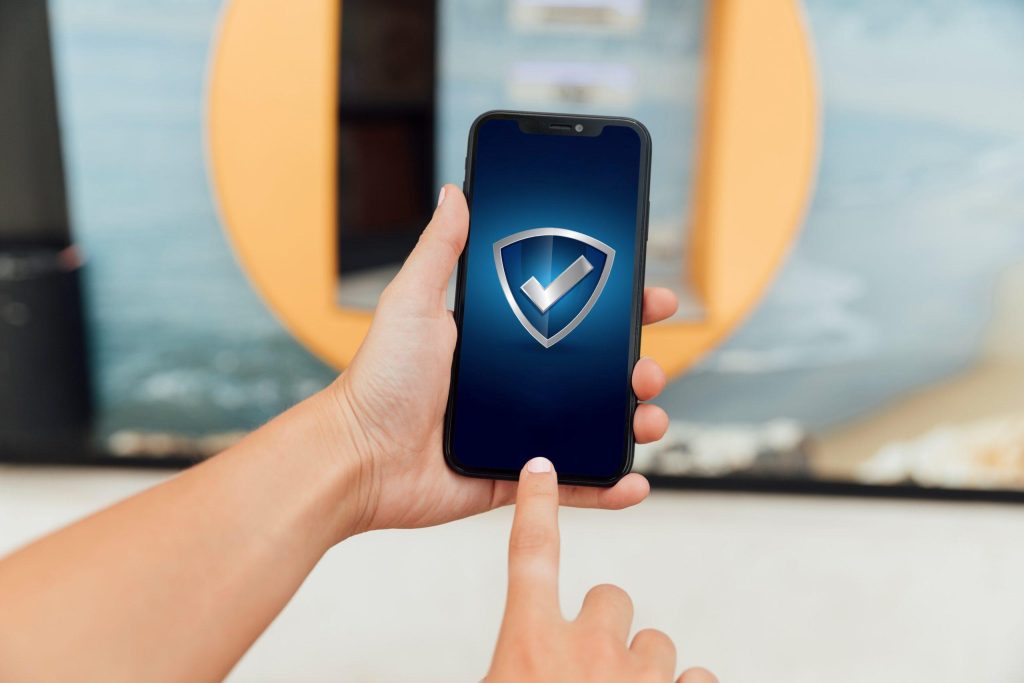This article outlines essential steps to secure your mobile app against cyber threats, emphasizing the importance of robust security measures in today’s digital landscape. Key strategies include implementing strong authentication, using secure APIs, encrypting sensitive data, and regularly updating your app. Additionally, it highlights the need for security testing, secure coding practices, and monitoring for incidents.
Educating users and ensuring compliance with regulations are also crucial for maintaining app security. By following these guidelines, businesses can protect user data, enhance their online presence, and build trust, ultimately leading to more successful mobile applications.
Understanding the Cyber Threat Landscape

Before diving into security measures, it’s essential to understand the types of cyber threats that can target mobile apps:
- Malware: Harmful software created to damage or take advantage of devices or networks. Mobile malware can steal data or compromise app functionality.
- Data Breaches: Unauthorized access to sensitive data, often leading to the exposure of user information, which can be detrimental for e-commerce apps or any platform handling personal data.
- Man-in-the-Middle Attacks: These attacks occur when an attacker intercepts communication between two parties, often used to steal data or inject malicious code.
- Code Injection: This vulnerability allows attackers to inject malicious code into your app, which can alter its behavior and compromise security.
Before diving into security measures, it’s essential to understand the types of cyber threats that can target mobile apps:
- Malware: Harmful software created to damage or take advantage of devices or networks. Mobile malware can steal data or compromise app functionality.
- Data Breaches: Unauthorized access to sensitive data, often leading to the exposure of user information, which can be detrimental for e-commerce apps or any platform handling personal data.
- Man-in-the-Middle Attacks: These attacks occur when an attacker intercepts communication between two parties, often used to steal data or inject malicious code.
- Code Injection: This vulnerability allows attackers to inject malicious code into your app, which can alter its behavior and compromise security.
Essential Steps to Secure Your Mobile App

Here are key steps to secure your mobile app effectively:
- Implement Strong Authentication Mechanisms: Establishing robust authentication mechanisms is the first line of defense against unauthorized access. Consider implementing multi-factor authentication (MFA) to enhance security. This additional layer requires users to provide two or more verification factors, significantly reducing the risk of unauthorized access.
- Tip: Utilize OAuth or OpenID for secure user authentication and manage user identities effectively.
- Use Secure APIs: APIs are integral to mobile app functionality, especially for e-commerce applications. However, insecure APIs can expose your app to vulnerabilities. Ensure that your APIs are secure by implementing the following measures:
- Use HTTPS to encrypt data transmission.
- Validate all inputs to prevent injection attacks.
- Implement proper authentication and authorization checks.
- Tip: Regularly review and update your API security protocols to adapt to emerging threats.
- Encrypt Sensitive Data: Data encryption is essential for safeguarding sensitive user information. Encrypt data both in transit and at rest to ensure that even if an attacker gains access to the data, it remains unreadable without the encryption key.
- Tip: Utilize industry-standard encryption algorithms, such as AES-256, to safeguard user data effectively.
- Regularly Update Your App: Frequent updates not only improve your app’s functionality but also address security vulnerabilities. Keep your app up-to-date by patching any identified security flaws and regularly updating dependencies and libraries.
- Tip: Establish a regular update cycle and encourage users to download the latest version to maintain security.
- Conduct Security Testing and Code Reviews: Regular security testing and code reviews are vital in identifying potential vulnerabilities within your app. Utilize automated testing tools and conduct manual code reviews to uncover security flaws before they can be exploited.
- Tip: Implement a robust DevSecOps strategy that integrates security practices throughout the development lifecycle, especially for Laravel or React Native app development.
- Use Secure Coding Practices: Adopting secure coding practices during the development phase is essential for building robust applications. Developers should follow best practices, such as:
- Avoid hardcoding sensitive information, like API keys and passwords.
- Implement input validation and sanitization to prevent injection attacks.
- Use parameterized queries to mitigate SQL injection risks.
- Tip: Train your development team on secure coding practices and promote a security-first mindset.
- Implement App Store Security Features: If you’re developing apps for the App Store or Google Play, make sure to leverage the security features offered by these platforms. For instance, Apple’s App Transport Security (ATS) enforces best practices for secure network connections.
- Tip: Stay updated on the security guidelines and requirements set forth by app stores to ensure compliance and security.
- Protect Against Reverse Engineering: Reverse engineering can expose your app’s source code and lead to unauthorized access or modifications. To protect against this threat, consider implementing code obfuscation techniques that make it difficult for attackers to understand your code structure.
- Tip: Use tools and services specifically designed for code obfuscation in mobile apps.
- Monitor and Respond to Security Incidents: Establishing a proactive approach to security monitoring can help identify and respond to incidents promptly. Implement logging and monitoring mechanisms to track app activity and detect anomalies that may indicate a security breach.
- Tip: Create an incident response plan that outlines procedures for responding to security threats and breaches.
- Educate Your Users: User education is vital for maintaining app security. Inform users about best practices for securing their accounts, such as using strong passwords and recognizing phishing attempts.
- Tip: Consider incorporating security tips and alerts within the app to keep users informed about potential threats.
The Importance of Compliance and Regulations

In addition to implementing security measures, it’s crucial to stay compliant with relevant regulations and standards, such as GDPR, CCPA, or PCI DSS. Compliance ensures that your app adheres to necessary legal requirements for data protection and user privacy.
Tip: Regularly review applicable regulations and update your security practices accordingly to maintain compliance.
Conclusion
Securing your mobile app against cyber threats is an ongoing process that requires diligence and commitment. By implementing these essential steps, you can significantly enhance your app’s security, protect user data, and build trust with your audience. Whether you’re focused on WordPress development, Laravel projects, or creating Shopify eCommerce sites, security should always be a top priority.
At Panalinks, we are dedicated to providing top-notch app development services while ensuring the highest security standards. We specialize in app development and understand the importance of implementing robust security measures.
This article outlines essential steps to secure your mobile app against cyber threats, ensuring its safety and integrity. Our expert team is here to help you navigate the complexities of mobile app security and development. Contact us at contactus@panalinks.com for your related needs.
Ready to secure your mobile app against cyber threats? Contact us today to discuss how we can assist you in your development journey!

